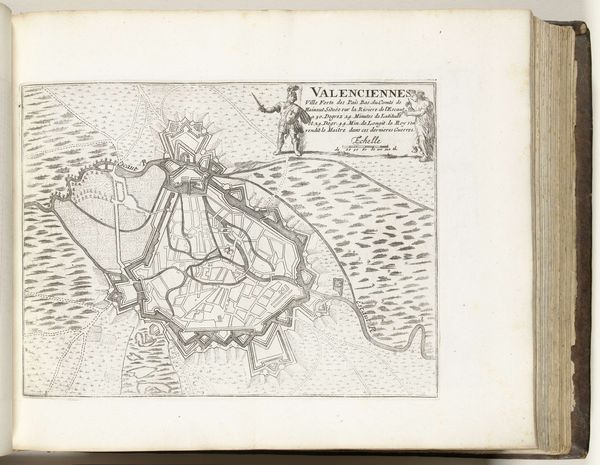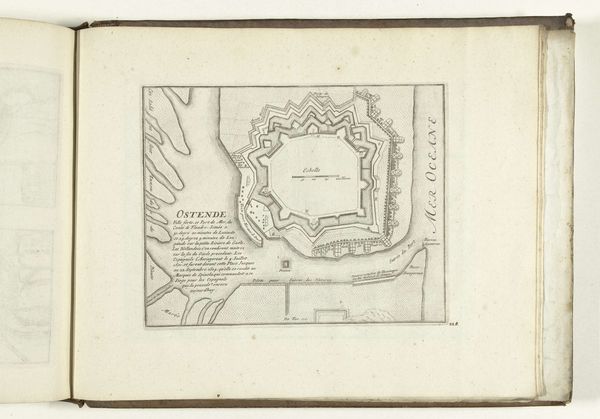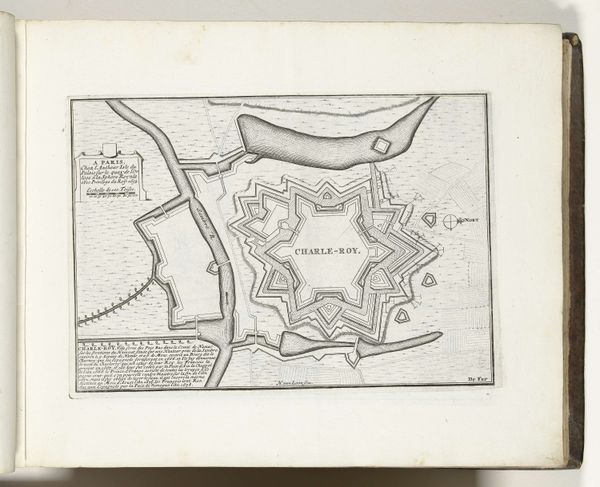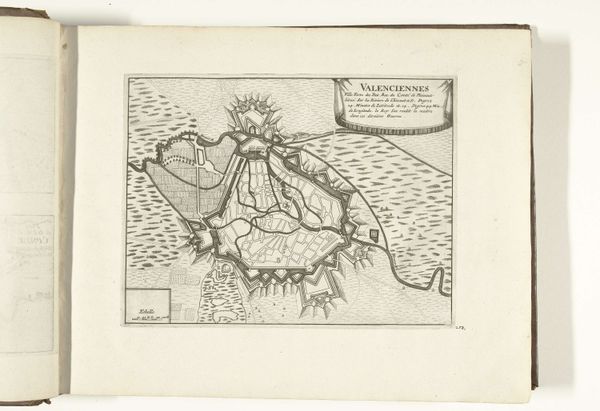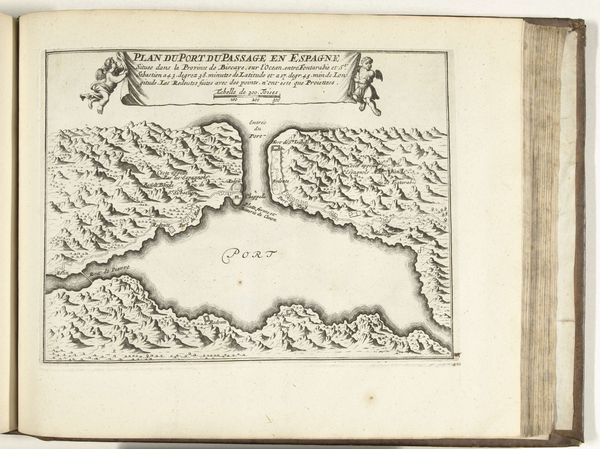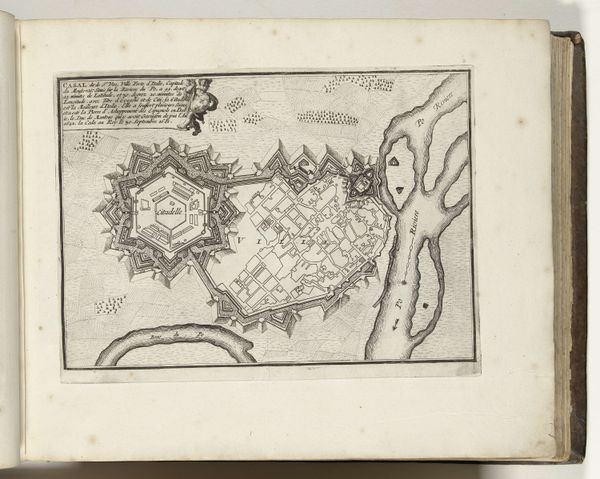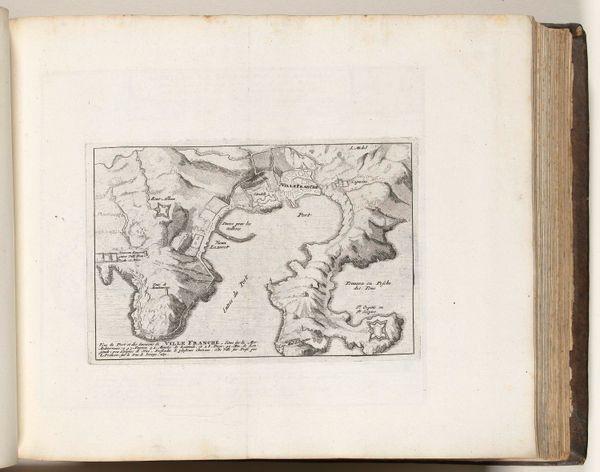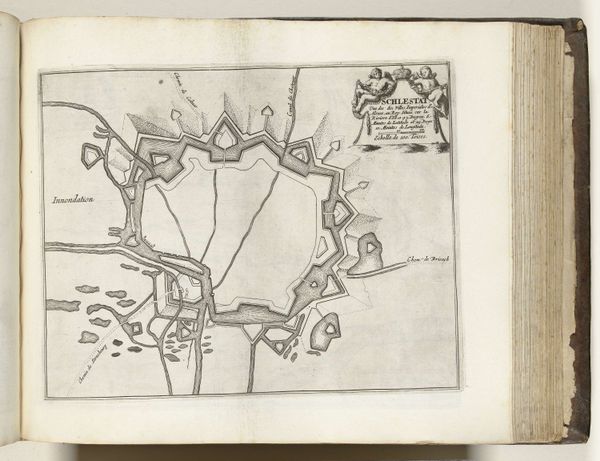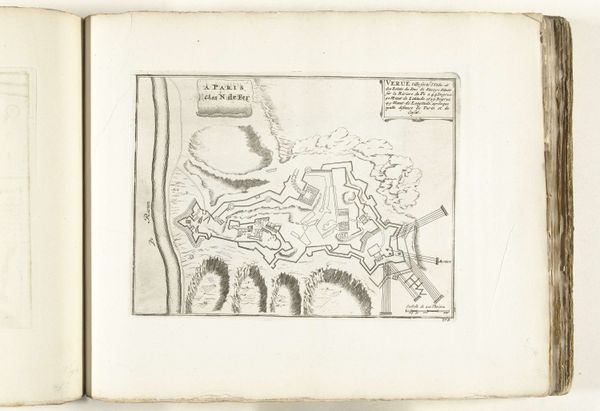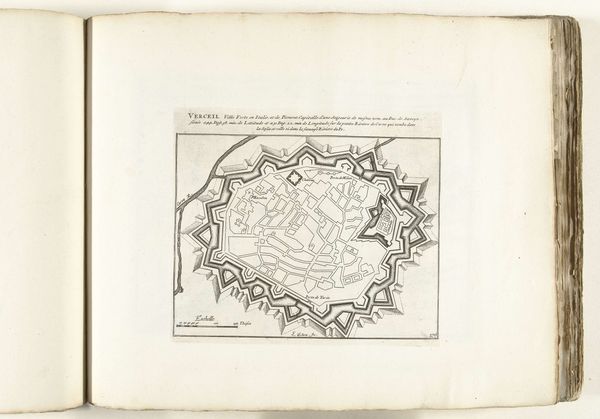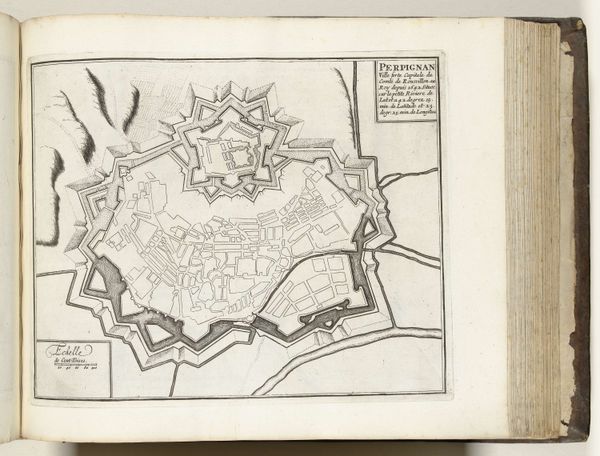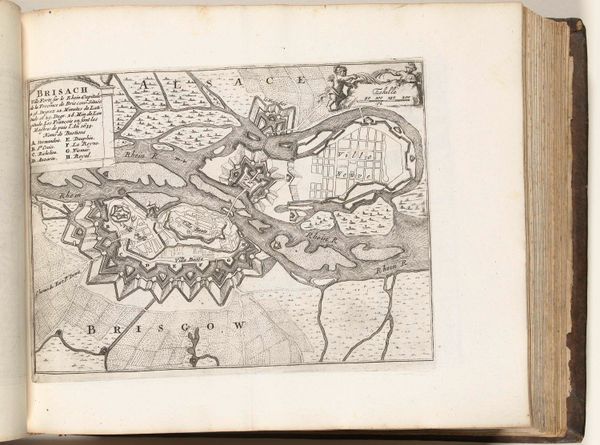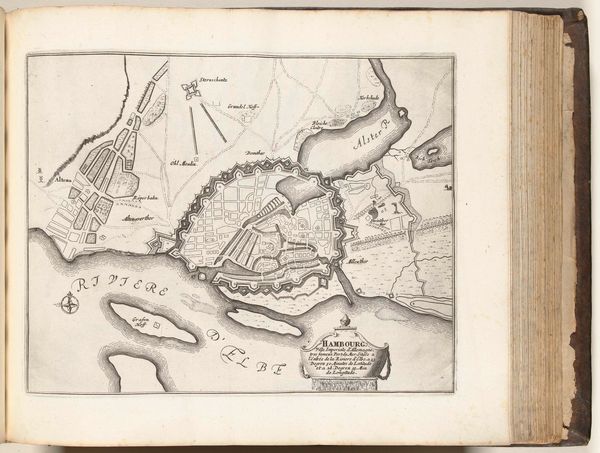
drawing, print, ink, engraving
#
drawing
#
baroque
# print
#
perspective
#
ink
#
geometric
#
cityscape
#
engraving
Dimensions: height 200 mm, width 274 mm
Copyright: Rijks Museum: Open Domain
Harmanus van Loon made this map of Maastricht in 1693 using engraving, a printmaking technique with a long and rich history. The process begins with a metal plate, usually copper, into which the design is cut using a tool called a burin. This requires immense skill, as the depth and angle of each cut determines the thickness and darkness of the lines. The plate is then inked, and the surface wiped clean, leaving ink only in the engraved lines. Finally, paper is laid on the plate and run through a press, transferring the ink to create the print. The very precision of the engraving lends the map its authority, a supposed objectivity. Yet, of course, a map is never neutral. It is a product of labor, and a representation of power. Consider the time and skill required to create this detailed rendering, and the social context in which such a work was commissioned and consumed. By appreciating the making of this map, we understand its meaning.
Comments
No comments
Be the first to comment and join the conversation on the ultimate creative platform.
